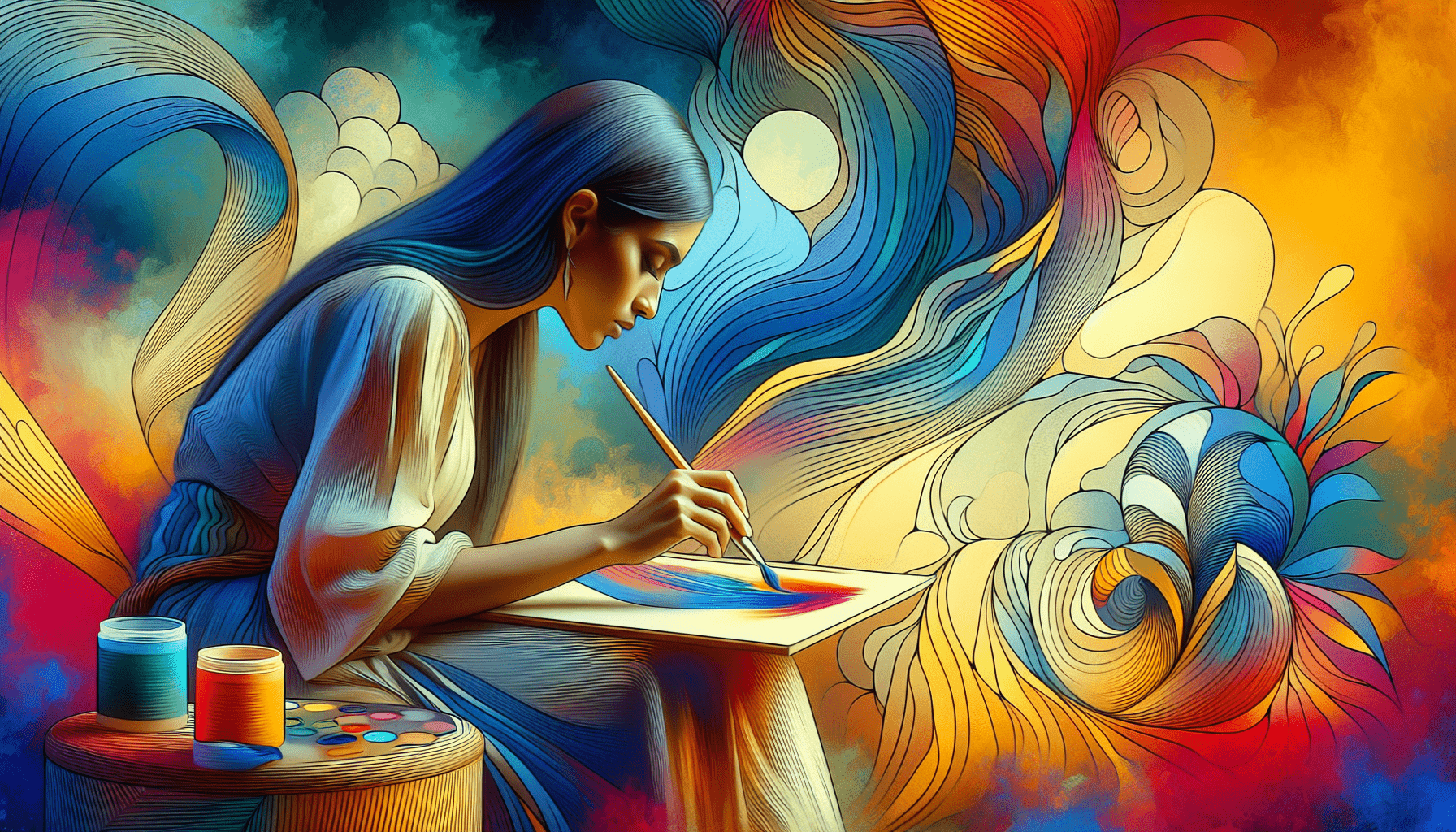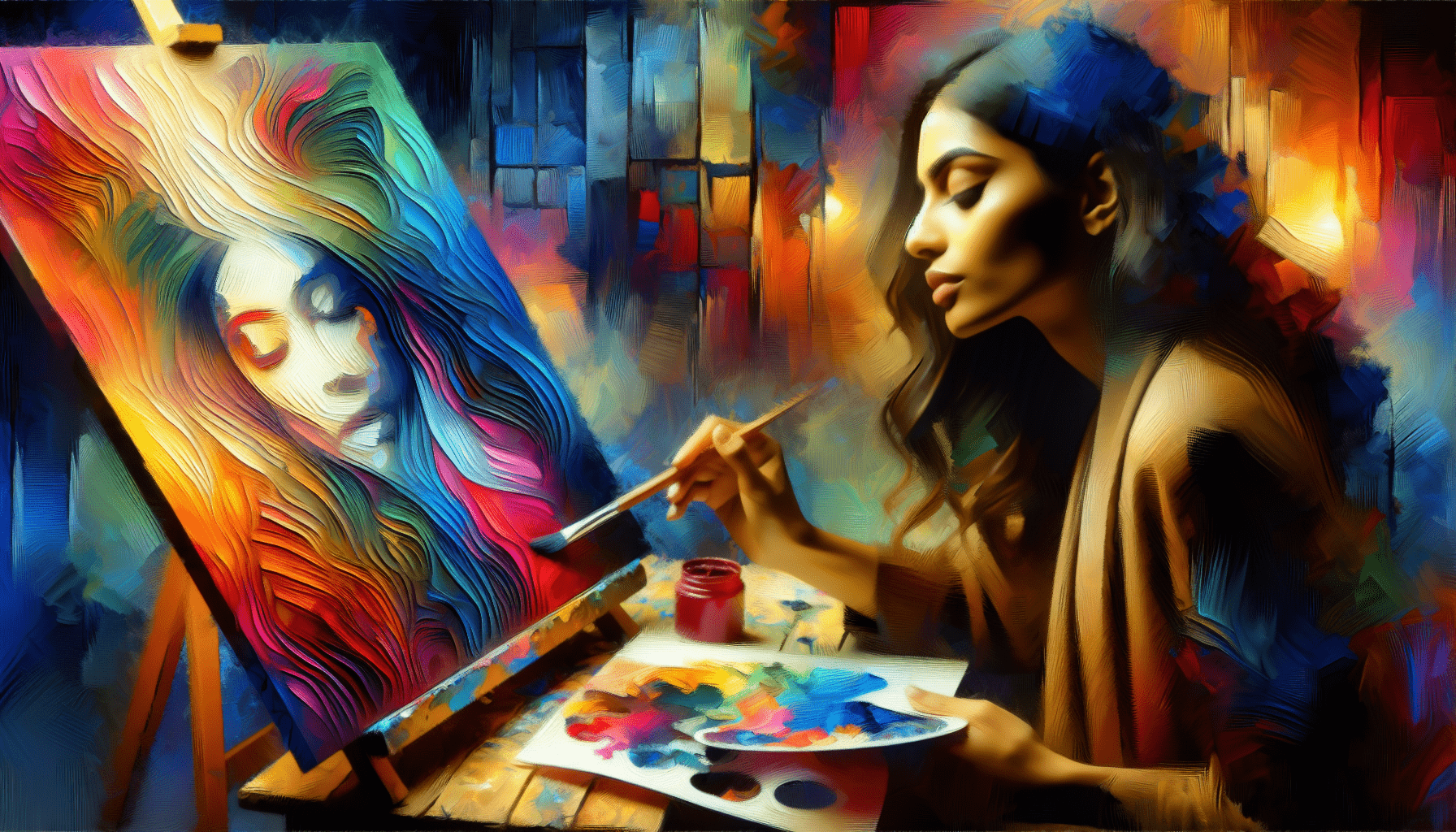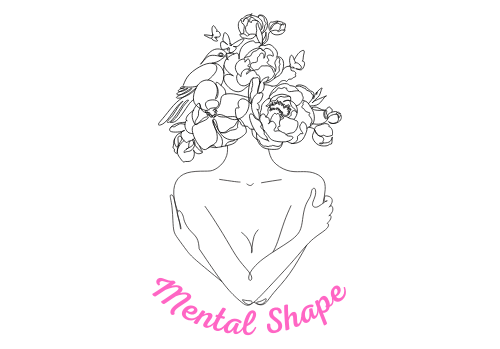Art therapy is a form of therapy that utilizes creative expression to promote healing and improve mental well-being. By using various art mediums such as painting, drawing, and sculpting, individuals are able to explore their emotions, reduce stress, and gain a deeper understanding of themselves. This article explores the many benefits of art therapy, from enhancing self-esteem to relieving anxiety, and how it can be a transformative tool for personal growth and healing. Whether you are an aspiring artist or someone looking for a unique and effective therapy approach, art therapy offers a safe and nurturing space to unlock your inner creativity and discover the profound healing power of art.

What is Art Therapy?
Art therapy is a form of therapy that utilizes art as a means of self-expression and exploration. It combines the creative process with psychological techniques to promote mental, emotional, and even physical well-being. Through the use of various art forms, such as painting, drawing, and sculpting, individuals are able to tap into their inner emotions and thoughts, allowing for a deeper understanding and healing process to take place.
Definition of art therapy
Art therapy is a specialized field that involves the use of artistic techniques and creative processes to help individuals improve their mental health, emotional well-being, and overall quality of life. A trained art therapist guides participants through the artistic process, providing a safe and supportive environment for them to explore their thoughts, feelings, and experiences. The focus is not on the final product, but rather on the journey and the insights gained along the way.
History of art therapy
Art therapy has a rich history that dates back to the early 20th century. It emerged as a recognized profession in the 1940s, with pioneers such as Margaret Naumburg and Edith Kramer paving the way for its development. Art therapy gained recognition as a valuable therapeutic approach in the 1960s and 1970s, and since then, it has continued to evolve and grow, becoming widely accepted in the fields of psychology and counseling.
The Role of Art in Therapy
Art plays a crucial role in the therapeutic process, as it provides a unique medium for individuals to express themselves and explore their inner world. Whether it’s through painting, drawing, or sculpting, art allows for a visual and tangible representation of one’s thoughts, emotions, and experiences.
Expressing emotions through art
Art provides a safe and non-verbal way for individuals to express their emotions, especially those that may be difficult to put into words. Through artistic expression, individuals can externalize their feelings, releasing them from the confines of their mind and onto the canvas or paper. This can be particularly beneficial for those who struggle with verbal communication or find it challenging to express their emotions openly.
Art as a form of communication
Art can also serve as a powerful form of communication, allowing individuals to share their experiences and perspectives with others. It provides a visual language that transcends barriers and enables individuals to connect with others on a deeper level. Through art, individuals can communicate their thoughts, feelings, and experiences in a way that words alone often cannot capture.
Benefits of Art Therapy
Art therapy offers a wide range of benefits for individuals of all ages and backgrounds. The creative process involved in art-making, combined with the support and guidance of an art therapist, can have a profound impact on a person’s mental, emotional, and even physical well-being.
Emotional healing and stress relief
Engaging in art-making can be a cathartic and empowering experience. It allows individuals to release bottled-up emotions and express themselves in a safe and non-judgmental space. The act of creating art can be soothing and calming, providing a much-needed outlet for stress relief and emotional healing. By expressing and processing their emotions through art, individuals can gain a sense of emotional release and experience a greater sense of inner peace and well-being.
Improved self-esteem and self-awareness
Art therapy can greatly enhance an individual’s self-esteem and self-awareness. Through the creative process, individuals can gain a deeper understanding of themselves, their strengths, and their challenges. They can discover new insights and perspectives, gain a greater sense of self-worth, and develop a more positive self-image. When individuals see the fruits of their artistic endeavors, they can experience a sense of accomplishment and increased self-confidence.
Enhanced communication and social skills
Art therapy can also help individuals improve their communication and social skills. Through engaging in art activities with others, individuals can learn to communicate their thoughts, feelings, and experiences more effectively. Art-making can serve as a bridge for individuals to connect with others, fostering a sense of community and facilitating communication in a non-threatening and supportive environment. This can be particularly beneficial for individuals who struggle with social skills or find it challenging to express themselves verbally.
Art Therapy Techniques
Art therapy employs a variety of techniques to facilitate the therapeutic process and help individuals achieve their goals. These techniques can be tailored to meet the unique needs and interests of each individual, allowing for a personalized and effective therapeutic experience.
Free art expression
Free art expression involves allowing individuals the freedom to create art without any specific guidelines or expectations. This technique encourages individuals to trust their artistic instincts and allows for a spontaneous and organic expression of their thoughts and emotions. By giving individuals the freedom to express themselves without judgment or restraint, free art expression can unlock their creativity and promote self-discovery.
Guided imagery
Guided imagery is a technique that involves the use of visualizations to guide individuals through a creative process. It can be used to evoke specific emotions, memories, or experiences and help individuals gain a deeper understanding of themselves. The art therapist may guide individuals through a meditation or visualization exercise, prompting them to create art that captures their experiences or visions. Guided imagery can be particularly beneficial for individuals who may have difficulty accessing and expressing their emotions directly.
Art journaling
Art journaling is a technique that combines writing and art-making to facilitate self-expression and reflection. It involves keeping a journal where individuals can freely express their thoughts, feelings, and experiences through a combination of writing and visual art. Art journaling allows individuals to explore their inner world in a personal and private way, providing an opportunity for introspection, self-reflection, and personal growth.
Sculpture and clay work
Sculpture and clay work involve creating three-dimensional art forms using various sculptural materials, such as clay, wire, or found objects. This technique allows individuals to engage with tactile materials and explore their creativity in a hands-on way. Sculpture and clay work can be particularly helpful for individuals who may struggle with verbal expression or find it easier to communicate through physical touch and manipulation. Working with clay or sculpting materials can also provide a sense of grounding and sensory stimulation, promoting relaxation and emotional release.

Art Therapy for Specific Populations
Art therapy can be tailored to meet the unique needs and challenges of specific populations, including children, adolescents, adults with mental health issues, and elderly individuals.
Children and adolescents
Art therapy can be a powerful tool for children and adolescents, as it provides a non-threatening and engaging way for them to express their thoughts and emotions. Through art, children and adolescents can gain a greater sense of self-awareness, build resilience, and develop healthy coping mechanisms. Art therapy can also help children and adolescents process traumatic experiences, address behavioral issues, and enhance their social and emotional skills.
Adults with mental health issues
Art therapy can be highly beneficial for adults with mental health issues, such as depression, anxiety, and trauma-related disorders. Engaging in art-making can provide a sense of relief, improve mood, and promote self-expression. Art therapy can also help adults explore and process unresolved emotional issues, gain insight into their behaviors and patterns, and develop effective coping strategies. It can be a valuable adjunct to traditional talk therapy and medication management.
Elderly individuals
Art therapy can greatly enhance the well-being and quality of life for elderly individuals. Engaging in art-making can promote cognitive function, improve memory and attention span, and stimulate creativity. Art therapy can also serve as a vehicle for reminiscence therapy, allowing elderly individuals to reflect on past experiences and share their life stories. By participating in art therapy, elderly individuals can experience a sense of purpose, connection, and fulfillment.
Art Therapy in Healing Trauma
Art therapy can be a powerful tool in the healing process for individuals who have experienced trauma. The creative process used in art therapy can help individuals process and integrate traumatic experiences, providing a safe and supportive outlet for expression and healing.
Processing traumatic experiences
Art therapy allows individuals to symbolically and metaphorically represent their traumatic experiences in a visual and tangible way. Through art-making, individuals can create images that reflect their emotions, memories, and sensations related to the trauma. This process can serve as a catalyst for processing and releasing unresolved emotions, enabling individuals to gain a sense of closure and healing.
Reducing anxiety and PTSD symptoms
Engaging in art therapy can help reduce anxiety and symptoms of post-traumatic stress disorder (PTSD). The act of creating art can be soothing and regulating, activating the parasympathetic nervous system and promoting relaxation. Art therapy also provides individuals with a sense of empowerment and control, as they are able to make choices and decisions about their creative process. By creating art that represents their experiences, individuals can gain a sense of mastery and begin to reclaim their lives from the grip of trauma.
Art Therapy in Mental Health Treatment
Art therapy can be a valuable component of mental health treatment, particularly for individuals with conditions such as depression, anxiety, eating disorders, and substance abuse.
Depression and anxiety
Art therapy can help individuals with depression and anxiety explore and express their emotions, alleviate symptoms, and promote a sense of well-being. Through engaging in art-making, individuals can tap into their creativity and find a sense of joy and pleasure, enhancing their mood and reducing feelings of sadness or unease. Art therapy can also provide individuals with a means of self-expression, helping them gain insight into their emotions and develop healthy coping mechanisms.
Eating disorders
Art therapy can be an effective adjunct to the treatment of eating disorders, as it provides a safe and non-judgmental space for individuals to explore their body image, self-esteem, and relationship with food. Through art-making, individuals can externalize their feelings and thoughts about their bodies, challenge distorted beliefs, and develop a more compassionate and accepting attitude towards themselves. Art therapy can also serve as a tool for identifying triggers, exploring underlying emotions, and developing healthier coping strategies.
Substance abuse
Art therapy can be a valuable tool in the treatment of substance abuse and addiction. Engaging in art-making can provide individuals with a healthy and constructive outlet for their emotions, reducing the risk of relapse. Art therapy can also help individuals explore the underlying causes of their addiction, address unresolved emotional issues, and develop healthier coping mechanisms. By engaging in art therapy, individuals can gain a renewed sense of self and purpose, free from the grips of addiction.
Art Therapy in Physical Rehabilitation
Art therapy can be a beneficial modality in physical rehabilitation settings, helping individuals recover from physical injuries or manage chronic pain.
Promoting motor skills
Engaging in art activities can promote the development and improvement of fine motor skills and hand-eye coordination. Art therapy can be particularly beneficial for individuals who have suffered physical injuries or disabilities, as it provides an opportunity to practice and refine these skills in a meaningful and enjoyable way. By engaging in art-making, individuals can regain control and strength in their hands and fingers, enhancing their overall physical functioning.
Pain management and coping
Art therapy can serve as a powerful tool in pain management and coping with chronic pain. Through the act of creating art, individuals can experience a sense of distraction and relief, shifting their focus away from their physical discomfort. Art therapy can also provide individuals with a means of expressing and processing their emotions related to their pain, allowing for a greater sense of control and psychological well-being.
Improving cognitive function
Engaging in art activities can stimulate cognitive function and promote brain health. Art therapy can help individuals improve their memory, attention span, and problem-solving skills. The creative process involved in art-making can also enhance neuroplasticity, facilitating the formation of new neural connections and promoting overall cognitive well-being. By engaging in art therapy, individuals can maintain and improve their cognitive abilities, even in the face of physical challenges.
Art Therapy in Palliative Care
Art therapy can greatly enhance the quality of life for individuals in palliative care, offering comfort, emotional support, and a means of self-expression.
Improving quality of life
Engaging in art therapy can greatly improve the quality of life for individuals in palliative care. Through art-making, individuals can experience a sense of accomplishment and purpose, providing them with a renewed sense of joy and fulfillment. Art therapy can also help individuals connect with their true selves, promoting a sense of meaning and dignity in the face of illness or end-of-life care.
Providing emotional support
Art therapy offers a unique form of emotional support for individuals in palliative care. The creative process involved in art-making can provide a safe and non-verbal way for individuals to express their fears, emotions, and hopes. Art therapists can provide a compassionate presence and guide individuals through the artistic process, offering validation, acceptance, and understanding. By engaging in art therapy, individuals in palliative care can find solace and comfort in the face of challenging circumstances.
Art Therapy in Self-Exploration and Personal Growth
Art therapy can be a powerful tool for self-exploration and personal growth, allowing individuals to discover and express their identity, explore their dreams and aspirations, and gain a deeper understanding of themselves.
Discovering and expressing identity
Art therapy provides a safe and supportive space for individuals to explore and express their identity. Through engagement in art-making, individuals can discover new facets of themselves and gain a deeper understanding of their values, beliefs, and strengths. Art can serve as a mirror that reflects an individual’s true self, allowing for self-discovery and self-expression.
Exploring dreams and aspirations
Art therapy can also help individuals explore their dreams and aspirations. Through visual art, individuals can create images that represent their goals and aspirations, enabling them to gain clarity and focus. Art-making can serve as a powerful tool for visualization and manifestation, allowing individuals to move towards their dreams and aspirations with intention and purpose. By engaging in art therapy, individuals can unleash their creativity and tap into their innate potential for growth and fulfillment.
In conclusion, art therapy is a powerful and versatile form of therapy that harnesses the healing power of art to promote mental, emotional, and even physical well-being. Through the use of various art forms and therapeutic techniques, individuals are able to explore and express their thoughts, emotions, and experiences in a safe and supportive environment. Whether it’s in healing trauma, promoting mental health, aiding in physical rehabilitation, providing comfort in palliative care, or facilitating self-exploration and personal growth, art therapy offers a multitude of benefits for individuals of all ages and backgrounds. So why not pick up a paintbrush or a lump of clay and embark on your own journey of self-discovery and healing? The artistic process awaits, inviting you to tap into your inner creativity and embrace the transformative power of art therapy.
